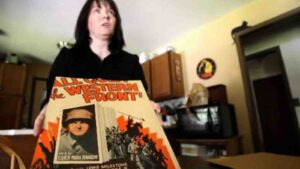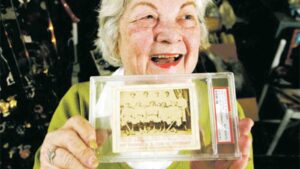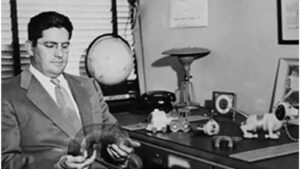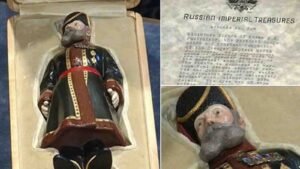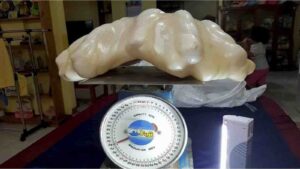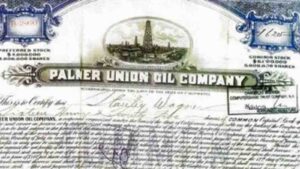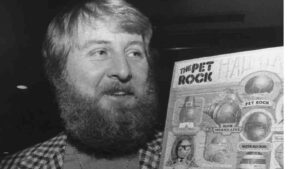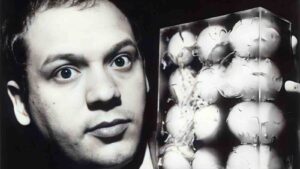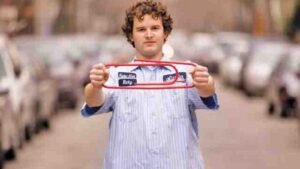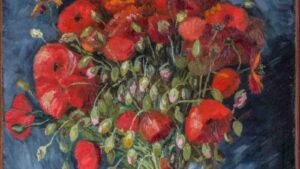Ordinary Items That Made People Rich.
Summary
Top 20 Ordinary Items That Made People Rich. Everyone likes to imagine that there might be a Picasso hidden in the attic. But it is a sad fact of life that when we finally get around to cleaning out the […]

Top 20 Ordinary Items That Made People Rich. Everyone likes to imagine that there might be a Picasso hidden in the attic. But it is a sad fact of life that when we finally get around to cleaning out the clutter, most of us will uncover nothing but dust bunnies.
However, some people have found out that riches were hiding not in their attics but in their junk drawers, backyards, bathrooms, dinner plates, or even on their birth certificates. And the things that they made fortunes from weren’t as rare as a work of art—they were things that almost everyone today can find or buy cheaply. Watch the full video to find out about ten ordinary items that made their owners rich.
Video: Ordinary Items That Made People Rich.
A Name:
When Jason Sadler’s mom told him his stepfather was filing for divorce, Sadler responded to the news with a joke. Sadler told his mom he’d just have to sell off his last name to avoid being stuck with the family name of a third divorced dad.
That joke became reality half a year later when Jason Sadler created a website called buymylastname.com. Sadler offered to change his last name to an advertising billboard for any company willing to pay for the privilege. What would happen if Nike wanted to change Jason’s name to Jason JustDoIt? Jason would just do it, as long as the dubbing was for the highest price offered.
Within 24 hours of the auction opening, his name’s selling price skyrocketed to thirty thousand dollars. Forty days later, Jason was paid forty-five thousand dollars to legally become Jason Headsetsdotcom. What is in a name.
A movie poster:
At a market in Summerville, Laura Stoufer bought a copy of a poster for an old movie. When she got home, she realized there was something behind the cardboard base. Inside, she discovered a poster for All Quiet on the Western Front, valued at $20,000.
A baseball card
Bernice Calego was cleaning up at home when she found an old photograph of a baseball team. The entrepreneurial lady put it up for sale on eBay for $10. In the end, Bernice sold it for $75,000 after it was valued by the National Association of Securities Dealers.
The St. Albans Hoard
While some people never have any luck for years on end, others hit the jackpot on their first attempt. Wesley Carrington from England bought himself a simple metal detector and discovered 55 golden Roman coins in a forest near St Albans, Hertfordshire, the first time he used it. They were worth $260,000.
The painting Magnolias
Someone from Indiana once bought a painting to hide a hole in their wall. Several years later, while playing a board game, they discovered a card showing the exact same image. Inviting an expert over to check, this lucky person discovered that they were the owners of a previously unknown painting by Martin Johnson Heade, worth $1.2 million.
Video: Top 20 Ordinary Items That Made People Rich.
A Cup of Coffee
On a cold winter day, Stella Liebeck and her nephew drove up to a McDonald’s drive-through. After ordering a cup of hot coffee, Liebeck spilled it on her lap as her nephew pulled the car away. Stella Liebeck then sued the restaurant chain for damages and won big time.
In the first court case that followed, Liebeck vs. McDonald’s, the jury awarded her three million dollars in compensation. Though a judge later reduced this prize to about half a million dollars, and Liebeck may have settled for a lesser amount later, that payout does not seem bad for spending fifteen minutes at a fast food franchise, though maybe not worth spending months in the courtroom.
But before we all head out to the nearest drive-through with a hot beverage in one hand and a phone ready to speed-dial our lawyers in another, this settlement did come with a cost greater than coffee-stained pants. Liebeck suffered third-degree burns and required skin grafts to recover, and evidence in the courtroom revealed that hundreds of people each year had suffered similar injuries because McDonald’s franchisees had overheated their coffee. This lawsuit was more a case of justice than frivolity.
A Spring
Richard James was working in a factory during World War II when he knocked a spring off the shelf. He was amazed when the spring smoothly coiled downward instead of instantly dropping to the ground. As the spring hit the floor, an idea hit him: what if he could make a coil that would double as a child’s toy?
After two years of tinkering, he came up with a toy that could stretch, retract, and spiral down inclines. His wife, Betty James, pulled out a dictionary and named it the slinky. Together, they took out a five hundred dollar loan and built an empire that continues to sell toys to this day.
At first, James and Betty struggled to make the slinky profitable. Toy shops refused to stock it because it was so ordinary. But once the toy caught on and James earned millions of dollars, he donated most of the profits to a religious group he had joined in South America. Far from being rich, James plunged his company into a seven-figure debt hole. Oops
Betty took over the company and miraculously turned it around. While selling enough slinkys to wrap around the globe one hundred and fifty times, she never strayed from the slinky’s simplicity and affordability and sold it even more cheaply in 1990 than it sold for in 1945.
A Tulip
A 17th-century Dutchman would be shocked if you gave your significant other a bouquet of tulips for Valentine’s Day. Not because the Dutch preferred roses, but because of the sheer value of the tulips (or more specifically, their bulbs) in the arrangement.
In the 1600s, tulips had just arrived in the Netherlands from what is now Turkey. A virus had afflicted harvests, which caused each tulip to be colored in its own unique pattern. Curiously, the diseased flowers became worth even more than the healthy tulips. Scholars coveted different tulip patterns and bought them as if they were collecting baseball or Pokemon cards.
Soon the population caught on that people in academia would buy uniquely patterned flowers at almost any cost, and prices for the tulips soared. By 1637, it would be possible for you to exchange a single bulb for one of the largest and most fashionable houses in all of the Netherlands. While prices collapsed less than a year later, people made and lost fortunes for what we give out freely as gifts today.
A figurine ordered by Nicholas II
George and Betty Davis from New York were once getting rid of the junk in their attic when they discovered a figurine that looked valuable. It turned out to have been produced by the Fabergé jewelry firm for Tsar Nicholas II of Russia. It was sold at auction for $5.2 million.
An unusual pearl
A Filipino fisherman once got caught on some rocks near the island of Palawan. While trying to free his anchor, he found a pearl that weighed 34 kg. The fisherman kept it under his bed for 10 years. The giant pearl has been valued at $35 million.
Shares in Coca-Cola
Tony Marohn spent $5 at a garage sale on a box of documents and ended up with a whole fortune. Among the papers, he found an old certificate for 1,625 shares in Palmer Union Oil. It turned out that after numerous mergers, the certificate gave him ownership of 1.8 million Coca-Cola shares, valued at $130 million.
Read More: The top 20 signs to detect lies
A Rock:
Gary Dahl was drinking at a bar when he came up with a concept that would take the 1970s by storm and make his company over a million dollars in revenue. In a conversation with his friends, he came up with the ultimate pet. It would be docile, housebroken, shed no hair, and have a long lifespan too. Rocks, Dahl realized, were the perfect pets in all respects, better than any cat, dog, or goldfish.
Dahl made his drunken idea a reality when he sold rocks in cardboard boxes, complete with air holes so the stones could breathe. For just under four dollars, you could possess a stone of your very own. A manual included in the package explained how to care for the rock, along with the tricks it could be taught. Among other sardonic jokes, it gave instructions on how a pet rock could be trained to play dead.
The rocks’ sheer absurdity caught the whimsy of Americans everywhere. Though anyone could pick up a feral rock in their backyard, the pet rock’s value as a gag gift made it fly off the shelves.
Garbage:
As anyone who lives in a city can tell you, litter is worse than worthless. A New Yorker named Justin Gignac was convinced otherwise. He believed that if someone packaged something right, it would sell (and clearly his point has been well proven by other items on this list as well!). He began to collect garbage off the streets and arrange it in glass smell-proof boxes.
Gignac sold them for ten dollars a pop, and people bought them as souvenirs. He raised the price to fifty dollars, and people bought them as artwork. Today, New York garbage costs one hundred dollars per cube, according to his website at the time of this writing.
Air
We breathe about twenty three thousand times a day. While we may spend money on basic necessities such as food, water, shelter, and electricity, nobody would even imagine paying for air. Right?
Two Canadians proved that people will pay for the stuff they breathe when the pair began bottling the air in the Rocky Mountains and selling it for twenty-four bucks a can. Chinese customers, choking in smog-filled cities, began to purchase the bottles both as a joke to protest against poor air quality (or so they say) and for whiffs of pure, unpolluted air (more likely).
Poop
We flush our waste down the toilet every day without much thought. If we excreted gold instead of poop, we might think twice about doing so.
Artist Piero Manzoni believed that his own waste was just as valuable as gold. In 1961, he put his money where was butt was, and canned ninety tins of his own poop and tried to sell it to his patrons. Less than two years later he exchanged thirty grams of the stuff for thirty grams of eighteen carat gold.
Lest we think that this was another strange byproduct of the 1960s, another can was sold in a 2008 auction for over one hundred thousand dollars, meaning that right now Manzoni’s poop is worth roughly sixty-five times its weight in gold.
Read More: 20 Fatal Ways Animals Protect Themselves
Kyle MacDonald, a 27-year old man from Montreal, started out his summer with no job, no house, and a single red paperclip. When Kyle resolved to get a home for him and his girlfriend to live in, he did not brush up his resume or open a savings account. Instead, he left his apartment with the red paperclip in hand and traded it for a pen that looked like a fish.
Thirteen exchanges later, he traded a movie role for a two story farmhouse in Kipling, Saskatchewan. Kyle had traded up the paperclip on his desk for a house in less than a year, in a story that shows even the value of office supplies can bring surprise.
Two Boxes of Pizza
In 2010 Lazlo Hanyecz, a hungry developer of a then near-unknown cryptocurrency called Bitcoin had a craving for pizza. Under the internet handle “lazlo”, he offered ten thousand bitcoins to anyone who would order him two pizza pies.
Ten years later in 2020, those ten thousand bitcoins are worth far more dough than the flour in two large pizzas. Anyone who had taken Laszlo up on his offer would now possess more than a hundred million dollars just for having made two orders from Papa John’s.
Vincent van Gogh’s Vase
A couple from Wisconsin once acquired a copy of van Gogh’s Vase With Red Poppies. The reproduction was so good that the couple began to have their suspicions, later confirmed by an expert: they had, in fact, bought the 1886 original, worth $1.4 million.
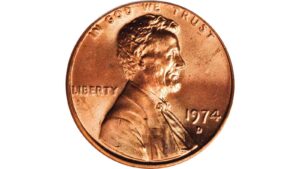 ©coinappraiser.com
©coinappraiser.com
A penny from 1974
Robert Lawrence collect penny inside a lunchbox from his father. Inside, he found a penny from 1974. It was first valued at $300, and it was later determined to be made from aluminum. Just 10 such coins had been issued, and the rest were lost. As a result, the penny turned out to be worth $2 million.
Whiskey from 1917
Bryan Fite found a cache of 13 bottles of whiskey in his attic that dated from 1917. Experts valued his “hoard” at $2.6 million, but Bryan declared that he wouldn’t be selling it. Instead, he plans to drink the whiskey with his friends.
Do you have any item which can make your rich please let us know in the comment section?

